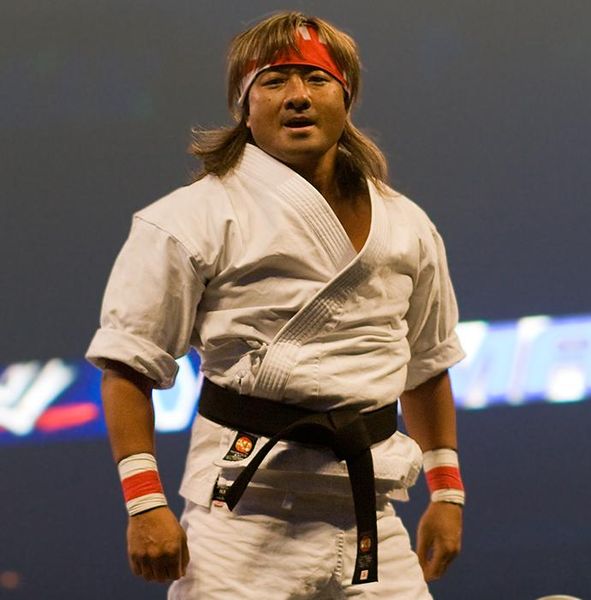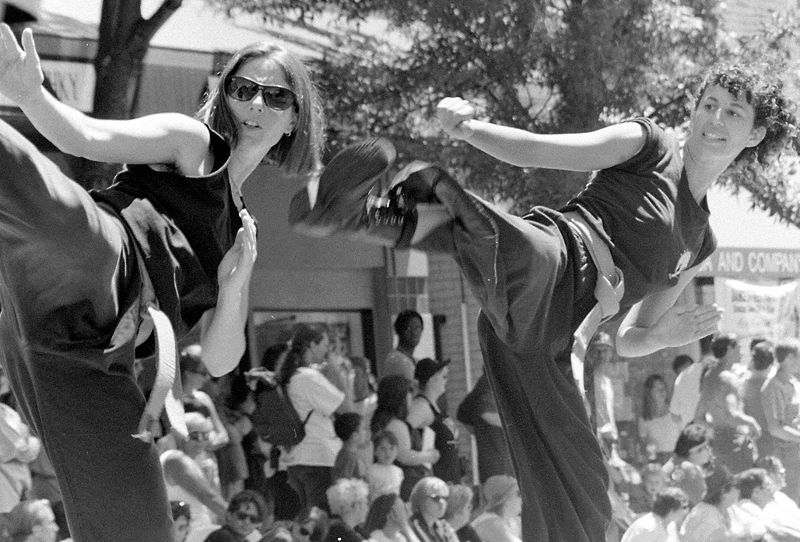Kung Fu

China’s history is the history of its Kung Fu. Through its turbulent past, China has been beset by invaders as a nation and has endured much internal strife. In Cantonese Language the word China is called jung gok and it means Central or middle country. It is a vast land mass, which was and still is very much desired by other lands who wish to invade it; therefore, China had to develop its martial arts to become a way of life.
There two main theories in regard to the birth of Kung fu. There is one stream who believes that Kung fu already existed before Bodhidharma, a great Buddhist monk had arrived in China. Bodhidharma’s main contribution was to introduce Chan (zen) to the Sil Lum Temple. A vary large number of people believe that this Bodhidharma is the founder of Kung fu. Throughout China’s history, credit has been given to Bodhidharma, as the creator of Sil Lum Kung fu or that he is the man responsible for the introduction of martial arts in China.
According to legend, a stern Indian Monk noticed that his very young Chinese disciples could not stay awake during long, tiring meditations of the new religion known as Zen or Chan Buddhism that he was trying to teach them. These disciples were in no condition to be able to endure the extremely exhaustive meditation methods that were developed by the Hindu, Buddhist and Yogic monks of their master’s Homeland, these young disciples were on the verge of failure in this new undertaking. The first patriarch Bodhidharma, realized this and undertook to introduce his frail disciples to an 18 movement exercise that was based on techniques he had discovered, and thus developed beyond the Himalayas. Before long these daily practices of 18 movements put strength into these young disciples, at the Sil Lum Temple, sufficient to enable them to receive their Master's teachings this later became known later as Sil Lum Kung fu and chan (Zen Buddhism).
Already three hundred years before the birth of Christ, China was already in its age of chivalry. Only the nobility were allowed to participate in warfare, and they used the ancient symbol of medieval chivalry, the chariot. The chariots were drawn by four harnessed horses: the harnesses contained a multitude of very small musical bells. Each chariot carried three men, an archer, a driver and a man who was proficient with a lance.
********
The lance looked like a spear except that it had an added hook which was used to snare the enemy. Behind the chariots standard bearers carried standards that depicted the symbolic animals of each direction:
1. The red bird of south
2. The black tortoise of the north
3. The white tiger of the west
4. and, the green dragon that represented the east.
This was con
Next was the period of "Warring States" (during 300 B.C.). During this era, Chivalry stepped a
*****
During 246 B.C., the emperor of the Ch'in dynasty came to power, he was the fist emperor of this era. He took on the name of Ch'in Shih-huang-ti or meaning "first emperor of the Ch'in" he is known in history as the Chinese Caesar. He accomplished what no other ruled did, united China into one complete Empire. He ruled iron fist, he enslaved multitudes in order to build the Great Wall of China, burnt all books that might conflict with his very rigid rules. He also put a prohibition on any practicing of martial arts and the carrying of any weapons by civilians.
The next emperor, an adventurer by the name of Liu Pang, who made some drastic changes, and overturned the previous rules edicts reestablishing the study of martial arts. Originally he was an escort and freelance martial artist. One day he had a bad of prisoners who he was escorting to jail, instead of taking them to jail Liu Pang decided to set them free and thus become their leader. He then led this army of ruffians, which had grown rapidly throughout China, and he soon assumed the throne, he went from a soldier of fortune to an emperor. He was therefore the first emperor of what is known as the Han dynasty, this dynasty lasted for four centuries. (202 B.C. - 220 A.D.).
Liu Pang who reputed to have said:
"It was while dressed in rough cloth and wielding a three-foot sword that I conquered the empire!"
He was noted as a soldier's king and it was due to his influence, martial arts once again flourished and continued throughout the Han dynasty.
The next era was the Ching Dynasty (A.D. 1644-1911), protection from the government forces had reached a peak, when the revolutionary martial artists engaged in many rebellious activities, while they used the safety of the Shaolin temple as a headquarters, from this rebellion many kung fu systems like hung gar, choy-li-fut, and white eyebrow grew and arose from such origins. The Manchurian government of the Ching dynasty in retaliation burned the Shaolin temple, which forced the rebels find hiding places and form secret societies.
During the Republic period (A.D. 1912-1948), and martial arts became very popular spreading throughout China. Military tactics were thus taught in all of the schools, promoting the fighting arts.
Chinese martial arts have one thing in common; that is the idea that kung fu is just a skill. True, but it's a skill that does require quite diligent and serious training for it to be perfect, however, it is a skill that can be learned by almost anyone. The translation of kung fu means "a knowledge or skill of something physical". The true value of Chinese martial arts goes way beyond just self defense. It empathizes the strong traditional training that belongs to all kung fu systems; training that will teach the kung fu student respect for his teacher and to respect his teacher's advice; to also have respect for other kung fu styles, this is important as it is all part of China's legacy; and most important of all, to use his kung fu skill only in the morally correct manner.
